How to cite this page Comment citer cette page
Items
In item set
People
-
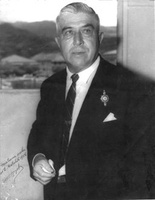 a Oopa Tetuaapua, Pouvana'a Tahitian politician and founder of the French Polynesian independence movement.
a Oopa Tetuaapua, Pouvana'a Tahitian politician and founder of the French Polynesian independence movement. -
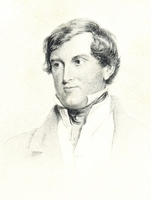 Acland, Thomas Dyke, 10th Baronet British politician and baronet. Acland was a supporter of the anti-slavery movement in Britain and was friends with William Wilberforce (1759-1833) and Hannah More (1745-1833). He also had links to Samuel Ajayi Crowther (c. 1809-91), who was the the first African Anglican bishop of West Africa. Acland's third son, Charles Richard Dyke Acland (1793-1828), was captain of HMS Helicon between 1825 and 1828, which made visits to the East African coastline. The Acland family's broad connections to global and imperial histories are the subject of ongoing research by the National Trust and partners.
Acland, Thomas Dyke, 10th Baronet British politician and baronet. Acland was a supporter of the anti-slavery movement in Britain and was friends with William Wilberforce (1759-1833) and Hannah More (1745-1833). He also had links to Samuel Ajayi Crowther (c. 1809-91), who was the the first African Anglican bishop of West Africa. Acland's third son, Charles Richard Dyke Acland (1793-1828), was captain of HMS Helicon between 1825 and 1828, which made visits to the East African coastline. The Acland family's broad connections to global and imperial histories are the subject of ongoing research by the National Trust and partners. -
Acland, Thomas Dyke, 12th Baronet British politician and landowner in the nineteenth and early twentieth centuries. His grandfather, Thomas Dyke Acland 10th Baronet (1787-1871) was a supporter of the anti-slavery movement in Britain and was friends with William Wilberforce (1759-1833) and Hannah More (1745-1833). The Acland family's broad connections to global and imperial histories are the subject of ongoing research by the National Trust and partners.
-
Adams-Acton, John British sculptor in the nineteenth and early twentieth centuries. Some of his notable colonial works include the statue of William Ewart Gladstone in Blackburn and two statues of Queen Victoria in Nassau, Bahamas and Kingston, Jamaica. Adams Acton also briefly lived in India for eight months in 1876, setting up a studio in Bombay (Mumbai), and carried out a number of commissions for the colony.
-
Adams, George Gammon English sculptor in the nineteenth century. Some of his notable colonial works include two statues of Charles James Napier, one of which is in Trafalgar Square and the other in St. Paul's Cathedral, as well as the monument to Captain Henry Langhorne Thompson, which is also at St Paul's Cathedral.
-
Adi, Hakim British historian specialising in African and Caribbean history, educationist, community activist
-
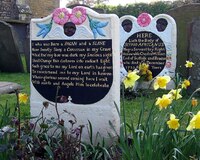 Africanus, Scipio Scipio Africanus was an enslaved child who worked in the household of Charles William Howard, 7th Earl of Suffolk, in Henbury, Bristol in the early eighteenth century. He was named after the famous Roman general Publius Cornelius Scipio Africanus.
Africanus, Scipio Scipio Africanus was an enslaved child who worked in the household of Charles William Howard, 7th Earl of Suffolk, in Henbury, Bristol in the early eighteenth century. He was named after the famous Roman general Publius Cornelius Scipio Africanus. -
Ahmedullah, Muhammad Bangladeshi-British community heritage activist based in London.
-
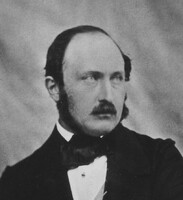 Albert Prince consort of the United Kingdom (1840-1861)
Albert Prince consort of the United Kingdom (1840-1861) -
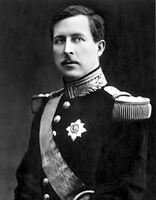 Albert I King of the Belgians (1909-1934)
Albert I King of the Belgians (1909-1934) -
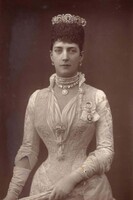 Alexandra of Denmark Queen consort of the United Kingdom (1901-1910)
Alexandra of Denmark Queen consort of the United Kingdom (1901-1910) -
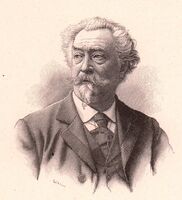 Allouard, Henri French sculptor in the nineteenth and twentieth centuries. His most notable colonial works are two monuments to Noël Ballay in Chartres in France and Conakry in Guinea.
Allouard, Henri French sculptor in the nineteenth and twentieth centuries. His most notable colonial works are two monuments to Noël Ballay in Chartres in France and Conakry in Guinea. -
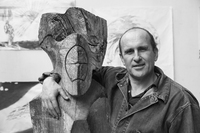 Alquin, Nicolas French sculptor
Alquin, Nicolas French sculptor -
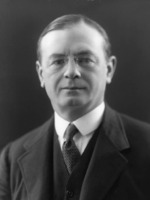 Amery, Leo First Lord of the Admiralty (1922-1924), Secretary of State for the Colonies (1924-1929), and Secretary of State for India and Burma (1940-1945)
Amery, Leo First Lord of the Admiralty (1922-1924), Secretary of State for the Colonies (1924-1929), and Secretary of State for India and Burma (1940-1945) -
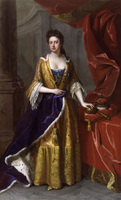 Anne Queen of Britain and Ireland from 1702 to 1714
Anne Queen of Britain and Ireland from 1702 to 1714 -
Arékian, Roger Guadeloupean artist.
-
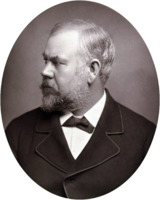 Armstead, Henry Hugh English sculptor in the nineteenth and early twentieth centuries. Some of his notable colonial works include architectural sculpture for the Colonial Office in Whitehall (today the Foreign, Commonwealth and Development Office) and the statue of Thomas Waghorn in Chatham.
Armstead, Henry Hugh English sculptor in the nineteenth and early twentieth centuries. Some of his notable colonial works include architectural sculpture for the Colonial Office in Whitehall (today the Foreign, Commonwealth and Development Office) and the statue of Thomas Waghorn in Chatham. -
Arsal, Eugène-René French sculptor active in the twentieth century.
-
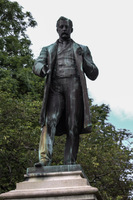 Ascroft, Robert British politician and lawyer of the nineteenth century. Ascroft was a Lancashire-based solicitor and member of the Conservative party; he served as Member of Parliament for the constituency of Oldham. In 1899, Winston Churchill considered joining him as the second Conservative candidate from Oldham; the plan was discarded because of Ascroft’s death. Ascroft acted as a legal advisor to the Association of Operative Cotton Spinners, which was founded in 1870. While Ascroft’s role in securing workers’ rights has been remembered positively in Britain, the British cotton textile industry itself had deep colonial associations. In the late nineteenth century, the British cotton textile industry was supplied with raw materials from India and Egypt. In 1895, for instance, Ascroft actively opposed Indian import duties in Parliament, which could have offered some tariff protection to the new Indian industries. This became politically controversial in India as politicians, such as Dadabhai Naoroji and R. C. Dutt, complained of the ‘deindustrialisation’ of the country and its use as a source of cheap raw materials as well as a captive market for mass-produced goods. From the 1920s, M.K. Gandhi led campaigns of boycotting Lancashire-produced goods and a promotion of Swadeshi or Indian-made goods for Indian consumers.
Ascroft, Robert British politician and lawyer of the nineteenth century. Ascroft was a Lancashire-based solicitor and member of the Conservative party; he served as Member of Parliament for the constituency of Oldham. In 1899, Winston Churchill considered joining him as the second Conservative candidate from Oldham; the plan was discarded because of Ascroft’s death. Ascroft acted as a legal advisor to the Association of Operative Cotton Spinners, which was founded in 1870. While Ascroft’s role in securing workers’ rights has been remembered positively in Britain, the British cotton textile industry itself had deep colonial associations. In the late nineteenth century, the British cotton textile industry was supplied with raw materials from India and Egypt. In 1895, for instance, Ascroft actively opposed Indian import duties in Parliament, which could have offered some tariff protection to the new Indian industries. This became politically controversial in India as politicians, such as Dadabhai Naoroji and R. C. Dutt, complained of the ‘deindustrialisation’ of the country and its use as a source of cheap raw materials as well as a captive market for mass-produced goods. From the 1920s, M.K. Gandhi led campaigns of boycotting Lancashire-produced goods and a promotion of Swadeshi or Indian-made goods for Indian consumers. -
Ashton, Thomas, 1st Baron Ashton of Hyde British industrialist, philanthropist, and politician. Born into a wealthy family of cotton manufacturers in Manchester, Ashton was a Liberal MP for Hyde from 1885 to 1886 and for Luton from 1895 to 1911. Ashton supported the Buller statue campaign in its early stages by providing a cheque of £250 or 5,000 shillings (about £20,000 in 2024) to the shilling fund in November 1901. This was the largest single donation towards the Buller statue and made up roughly a fifth of the total memorial fund, which came to over 26,000 shillings (about £100,000 in 2024).
-
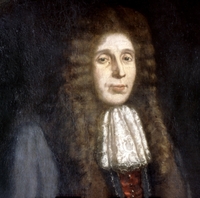 Aske, Robert English philanthropist, merchant, haberdasher, and investor in the slave-trading Royal African Company in the seventeenth century.
Aske, Robert English philanthropist, merchant, haberdasher, and investor in the slave-trading Royal African Company in the seventeenth century. -
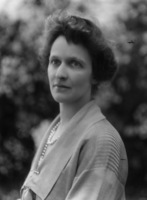 Astor, Nancy First woman seated as a Member of Parliament (MP) for Plymouth Sutton from 1919 to 1945. Astor was the daughter of American railroad industrialist Chiswell Langhorne (1843-1919), whose family owned enslaved people and plantations in Lynchburg, Virginia prior to the American Civil War. Langhorne briefly fought in the Confederate Army and later worked in tobacco auctioneering during the war. Astor's mother Nancy Witcher Keene (1848-1903) also came from a slave-owning family. Born in 1879, fourteen years after the end of the war and the abolition of slavery, Nancy spent her teenage years in an environment firmly shaped by the legacies of American slavery at the “Mirador” family home in Virginia in the 1890s. The Langhornes were one of many white American families whose domestic life rested upon the bedrock of white supremacy. According to her biographer Christopher Sykes, all of the Langhorne’s servants at Mirador were black and many had been formerly enslaved. While Nancy romantically reminisced about these black servants being “part of the family”, there were clear racial and class tensions within this family environment, with Sykes noting a number of conflicts between her father Chiswell and the family’s domestic workforce. A controversial figure both during her life and in historical memory, Astor has also attracted critical scrutiny for her antisemitism and alleged sympathies with Nazi Germany.
Astor, Nancy First woman seated as a Member of Parliament (MP) for Plymouth Sutton from 1919 to 1945. Astor was the daughter of American railroad industrialist Chiswell Langhorne (1843-1919), whose family owned enslaved people and plantations in Lynchburg, Virginia prior to the American Civil War. Langhorne briefly fought in the Confederate Army and later worked in tobacco auctioneering during the war. Astor's mother Nancy Witcher Keene (1848-1903) also came from a slave-owning family. Born in 1879, fourteen years after the end of the war and the abolition of slavery, Nancy spent her teenage years in an environment firmly shaped by the legacies of American slavery at the “Mirador” family home in Virginia in the 1890s. The Langhornes were one of many white American families whose domestic life rested upon the bedrock of white supremacy. According to her biographer Christopher Sykes, all of the Langhorne’s servants at Mirador were black and many had been formerly enslaved. While Nancy romantically reminisced about these black servants being “part of the family”, there were clear racial and class tensions within this family environment, with Sykes noting a number of conflicts between her father Chiswell and the family’s domestic workforce. A controversial figure both during her life and in historical memory, Astor has also attracted critical scrutiny for her antisemitism and alleged sympathies with Nazi Germany. -
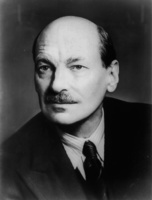 Attlee, Clement Major British statesman and Labour Party politician in the twentieth century. In 1927, Attlee was one of the members of the Simon Commission sent to India to examine the possibilities of self-rule in Britain's largest colony. During the Second World War, Attlee was Deputy Prime Minister of the United Kingdom from 1942 to 1945, as well as briefly serving as the Secretary of State for Dominion Affairs from 1942 to 1943. As Prime Minister of the United Kingdom from 1945 to 1951, Attlee oversaw Britain's postwar transition and the beginning of decolonisation. Major events included the arrival of the Windrush generation who migrated from the Caribbean to Britain (1945-1960), the Partition of India (1947), the independence of Myanmar and Sri Lanka (1948), Britain's withdrawal from Palestine (1948), and the Malayan Emergency (1948-1960).
Attlee, Clement Major British statesman and Labour Party politician in the twentieth century. In 1927, Attlee was one of the members of the Simon Commission sent to India to examine the possibilities of self-rule in Britain's largest colony. During the Second World War, Attlee was Deputy Prime Minister of the United Kingdom from 1942 to 1945, as well as briefly serving as the Secretary of State for Dominion Affairs from 1942 to 1943. As Prime Minister of the United Kingdom from 1945 to 1951, Attlee oversaw Britain's postwar transition and the beginning of decolonisation. Major events included the arrival of the Windrush generation who migrated from the Caribbean to Britain (1945-1960), the Partition of India (1947), the independence of Myanmar and Sri Lanka (1948), Britain's withdrawal from Palestine (1948), and the Malayan Emergency (1948-1960). -
Audiard, Michel French sculptor.
-
Audrat, Didier French sculptor.
-
Aumonier, William English sculptor in the nineteenth and twentieth centuries.
-
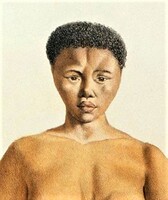 Baartman, Sarah Khoikhoi woman who was exhibited in Europe as a racist and voyeuristic attraction. Baartman spent her early childhood on farms in the Eastern Cape of South Africa during the period of Dutch colonial rule. In 1810, Baartman was taken - potentially by force - to London by Scottish military surgeon Alexander Dunlop and Hendrik Cesars. She was then subject to cruel racist exhibitions across Europe for the next five years, including by the French scientist and racial theorist Georges Cuvier in 1815. Baartman died in 1815, but her body was subjected to further scientific experimentation, abuse and violence after her passing. Cuvier later dissected Baartman's body and preserved her remains in the Muséum d'Histoire Naturelle. Her remains stayed in France until they were repatriated and buried in South Africa in 2002, after a request made by Nelson Mandela to the French government in 1994.
Baartman, Sarah Khoikhoi woman who was exhibited in Europe as a racist and voyeuristic attraction. Baartman spent her early childhood on farms in the Eastern Cape of South Africa during the period of Dutch colonial rule. In 1810, Baartman was taken - potentially by force - to London by Scottish military surgeon Alexander Dunlop and Hendrik Cesars. She was then subject to cruel racist exhibitions across Europe for the next five years, including by the French scientist and racial theorist Georges Cuvier in 1815. Baartman died in 1815, but her body was subjected to further scientific experimentation, abuse and violence after her passing. Cuvier later dissected Baartman's body and preserved her remains in the Muséum d'Histoire Naturelle. Her remains stayed in France until they were repatriated and buried in South Africa in 2002, after a request made by Nelson Mandela to the French government in 1994. -
Bacon, Charles English sculptor in the nineteenth century.
-
Bacon, John, the Elder English sculptor in the eighteenth century. Some of his notable colonial works include the statue of Admiral George Rodney in Spanish Town, Jamaica, and Charles Cornwallis on the Gurkha Staircase in the Foreign, Commonwealth & Development Office in London. Bacon also produced a number of memorials in Jamaica for individuals linked to slavery, such as the monument to Francis Rigby Brodbelt in St Catherine’s Parish Church, the monument to Malcom and Eleanor Laing in Kingston Parish Church, and the monument to Rosa Palmer in St James’s Parish Church.
-
Bacon, John, the Younger English sculptor in the eighteenth and nineteenth centuries. Some of his notable colonial works include the statues of Charles Cornwallis and Richard Wellesley in Kolkata and Mumbai. Bacon also produced a number of memorials in the British Caribbean for individuals linked to slavery, such as the monument to Ralph Payne, 1st Baron Lavington in Antigua, the monument to Frances Inglis in Kingston Parish Church, Jamaica, and the monument to Duncan Anderson in St James’s Parish Church, Jamaica.
-
Bacquet, Paul French sculptor active in the nineteenth century.
-
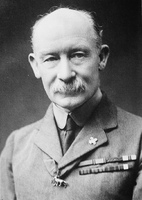 Baden-Powell, Robert British Army officer and founder of the worldwide Scout Movement. Baden-Powell fought in a number of colonial conflicts in the late nineteenth and early twentieth centuries, including the Anglo-Ashanti wars, the Second Matabele War, and the Second Boer War. During the Matabele War, Baden-Powell came under legal scrutiny when he was accused of illegally approving the execution of Uwini, the Matabele chief, who was being held as a prisoner-of-war by the British. Baden-Powell's conduct in the Second Boer War has also attracted controversy over his role in the deaths of Africans during the Siege of Mafeking, many of whom were denied rations. Baden-Powell's military experience from these colonial wars later inspired his work Scouting for Boys (1908), which lay the foundation stone for the worldwide Scout Movement. The movement played an important part in the imperial education of young boys and girls in twentieth-century Britain, and was shaped by contemporary debates around the role of race, gender, class, militarism, nationhood, and empire in constructing British citizenship.
Baden-Powell, Robert British Army officer and founder of the worldwide Scout Movement. Baden-Powell fought in a number of colonial conflicts in the late nineteenth and early twentieth centuries, including the Anglo-Ashanti wars, the Second Matabele War, and the Second Boer War. During the Matabele War, Baden-Powell came under legal scrutiny when he was accused of illegally approving the execution of Uwini, the Matabele chief, who was being held as a prisoner-of-war by the British. Baden-Powell's conduct in the Second Boer War has also attracted controversy over his role in the deaths of Africans during the Siege of Mafeking, many of whom were denied rations. Baden-Powell's military experience from these colonial wars later inspired his work Scouting for Boys (1908), which lay the foundation stone for the worldwide Scout Movement. The movement played an important part in the imperial education of young boys and girls in twentieth-century Britain, and was shaped by contemporary debates around the role of race, gender, class, militarism, nationhood, and empire in constructing British citizenship. -
 Baillie, Siobhan Member of Parliament for Stroud (2019-)
Baillie, Siobhan Member of Parliament for Stroud (2019-) -
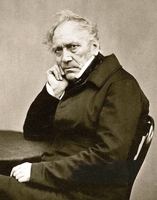 Baily, Edward Hodges British sculptor active in the nineteenth century. Some of his notable colonial works include the statue of Richard Bourke in Sydney, Australia, the statue of David Hare in Kolkata, and the statue of Charles Metcalfe in Kingston, Jamaica. Baily also executed a number of monuments to figures with connections to transatlantic slavery, including a monument to Thomas Picton in Carmarthen (now dismantled), a monument to Henry Vassall-Fox, 3rd Baron Holland in Westminster Abbey, and a statue of Nicholas Conyngham Tindal in Chelmsford.
Baily, Edward Hodges British sculptor active in the nineteenth century. Some of his notable colonial works include the statue of Richard Bourke in Sydney, Australia, the statue of David Hare in Kolkata, and the statue of Charles Metcalfe in Kingston, Jamaica. Baily also executed a number of monuments to figures with connections to transatlantic slavery, including a monument to Thomas Picton in Carmarthen (now dismantled), a monument to Henry Vassall-Fox, 3rd Baron Holland in Westminster Abbey, and a statue of Nicholas Conyngham Tindal in Chelmsford. -
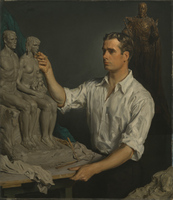 Baker, Bryant British-born American sculptor active in the twentieth century.
Baker, Bryant British-born American sculptor active in the twentieth century. -
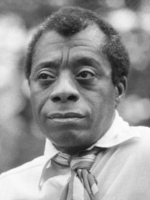 Baldwin, James American writer and civil rights activist in the twentieth century, widely renowned for his literary works which spoke, although not exclusively, to the experience of Black Americans and queer people both within the United States and beyond.
Baldwin, James American writer and civil rights activist in the twentieth century, widely renowned for his literary works which spoke, although not exclusively, to the experience of Black Americans and queer people both within the United States and beyond. -
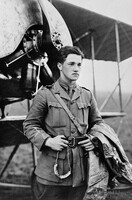 Ball, Albert British aviator killed in WWI.
Ball, Albert British aviator killed in WWI. -
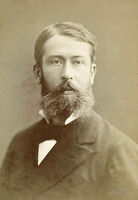 Ballay, Noël Governor of French Guinea (1891-1900), Governor of Senegal (1900-1902), and Governor General of French West Africa (1900-1902).
Ballay, Noël Governor of French Guinea (1891-1900), Governor of Senegal (1900-1902), and Governor General of French West Africa (1900-1902). -
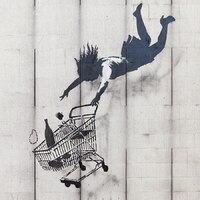 Banksy Pseudonymous England-based street artist and political activist active from the 1990s.
Banksy Pseudonymous England-based street artist and political activist active from the 1990s. -
Bañuelos, Tomás Spanish sculptor
-
Bareau, Georges French sculptor in the nineteenth and twentieth centuries.
-
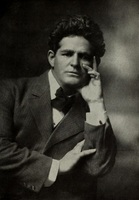 Barnard, George Grey American sculptor in the nineteenth and twentieth centuries.
Barnard, George Grey American sculptor in the nineteenth and twentieth centuries. -
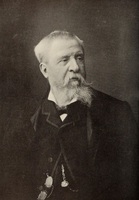 Barrias, Louis-Ernest French sculptor in the nineteenth and early twentieth centuries.
Barrias, Louis-Ernest French sculptor in the nineteenth and early twentieth centuries. -
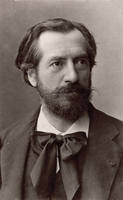 Bartholdi, Frédéric-Auguste French sculptor active in the nineteenth and early twentieth centuries.
Bartholdi, Frédéric-Auguste French sculptor active in the nineteenth and early twentieth centuries. -
Barton, Amanda Sculptor
-
Bates, Harry English sculptor in the nineteenth century. His most notable colonial work was his bronze equestrian statue of Frederick Roberts. The statue of Roberts, which bankrupted Bates, was first installed in Kolkata, and copies were subsequently made posthumously by Henry Poole for London and Glasgow.
-
Baucke, Heinrich German sculptor in the late nineteenth and early twentieth centuries.
-
Baudry, Léon-Georges French sculptor active in the twentieth century.
-
Bayes, Gilbert English sculptor in the nineteenth and twentieth centuries.
-
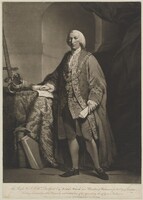 Beckford, William British-Jamaican slave-owner and politician in the eighteenth century. Born into a wealthy colonial family in Jamaica, Beckford owned a huge number of enslaved people as well as considerable amount of land in the colony. In Beckford's estate probate in 1774, for example, he was listed as the owner of a total of 1,356 enslaved people in Jamaica. Beckford's colonial wealth enabled him to become Lord Mayor of London in 1762 and 1769.
Beckford, William British-Jamaican slave-owner and politician in the eighteenth century. Born into a wealthy colonial family in Jamaica, Beckford owned a huge number of enslaved people as well as considerable amount of land in the colony. In Beckford's estate probate in 1774, for example, he was listed as the owner of a total of 1,356 enslaved people in Jamaica. Beckford's colonial wealth enabled him to become Lord Mayor of London in 1762 and 1769.